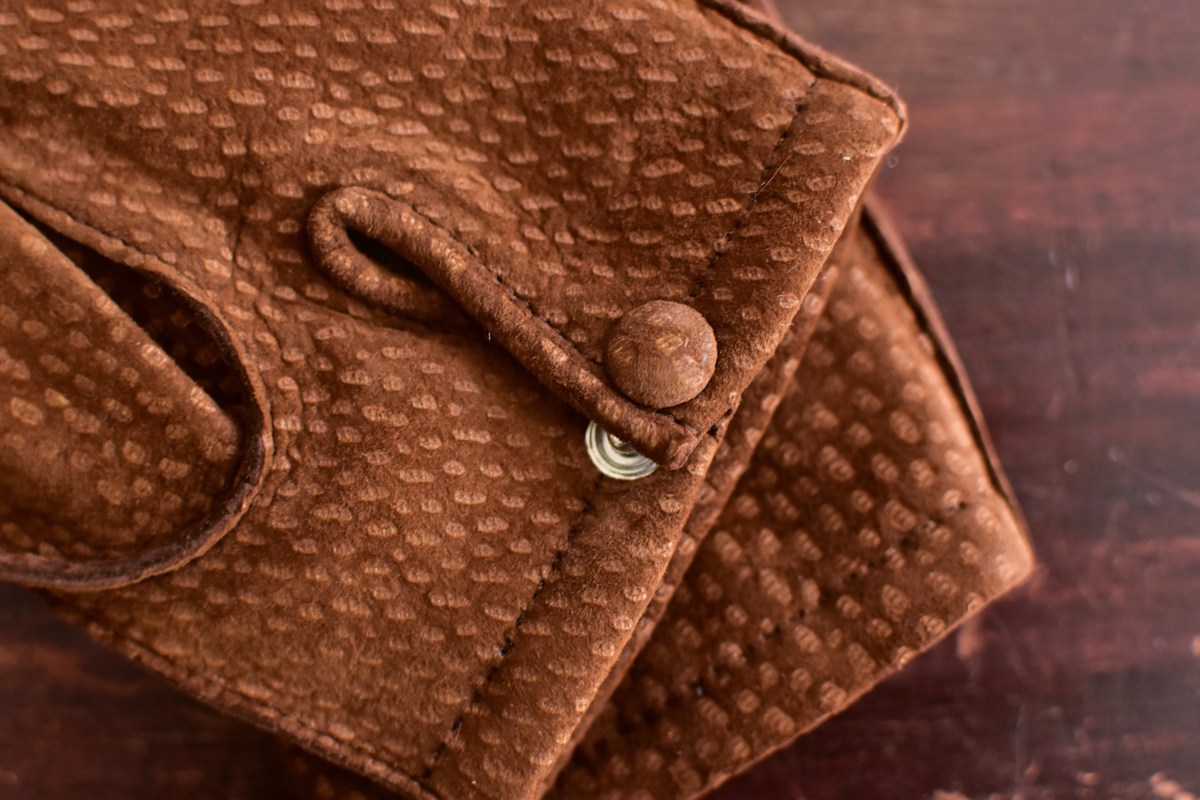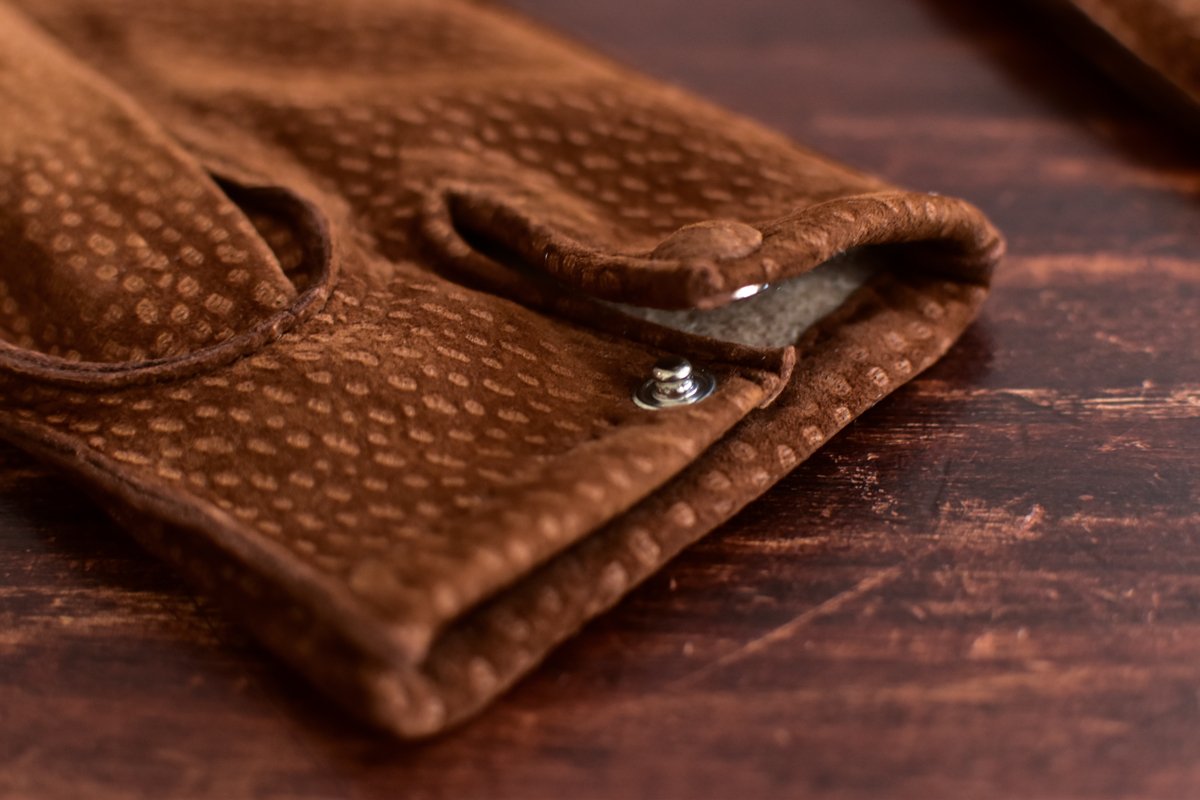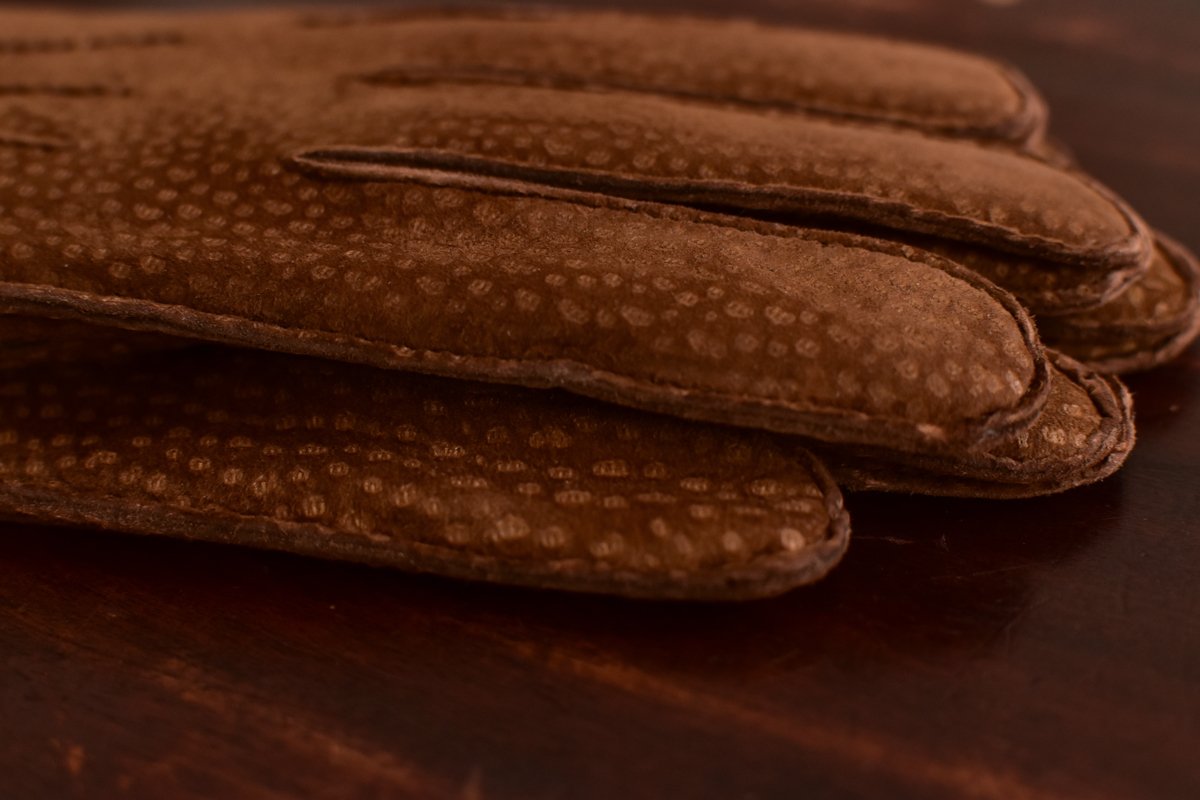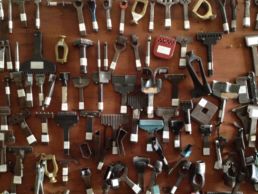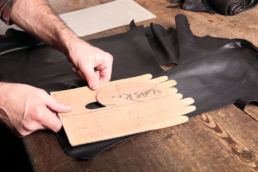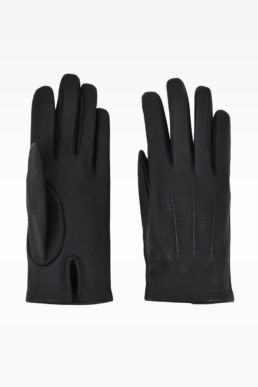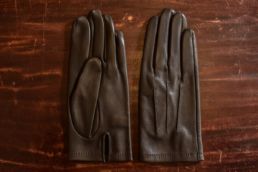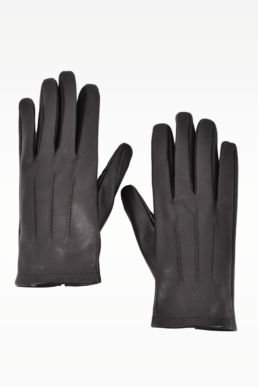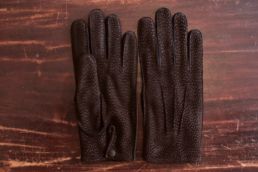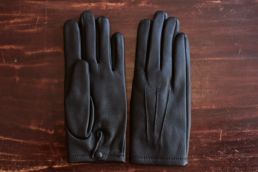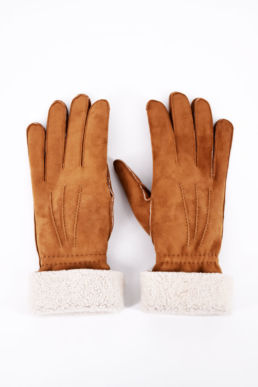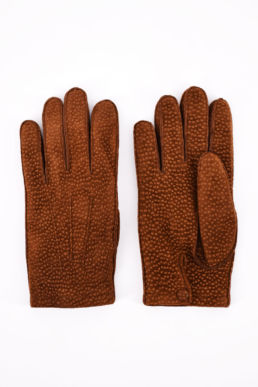Lavabre Cadet represents a culture of excellence in French glove making
One of the last glovemakers in France, the house perpetuates the French tradition of glove-making in Millau since 1946.
The vast majority of leathers are sourced locally and only the highest quality skins are used. The craftsmen and master glovemakers of the house use traditional methods to make gloves from goat, lamb, deer, peccary and carpincho any other even more rare leathers such as ostrich or alligator.
Among the distinctive elements of Lavabre Cadet gloves is the desire to make no compromises on quality. The choice of the largest and most homogeneous skins makes it possible to make a pair with the same piece in order to preserve the consistency of the leather. The skins are always stretched by hand, using a wooden table edge. Edge that over the years takes on wear and patina with a repeated gesture by an experienced craftsman. The tools and forms used have been the same for decades and are still destined to be used by generations of craftsmen to come.
The Carpincho, also called Capybara, is a wild animal living in South America who’s leather can be recognized by the texture and little dots on the skin. Full-grain Carpincho leather resembles suede and is one of the most distinctive leathers for gloves, which can only be stitched by master glove makers. Visually beautiful, this leather is also soft, durable and warm.
The entire Ardentes Clipei x Lavabre Cadet collection is handmade in Millau.

